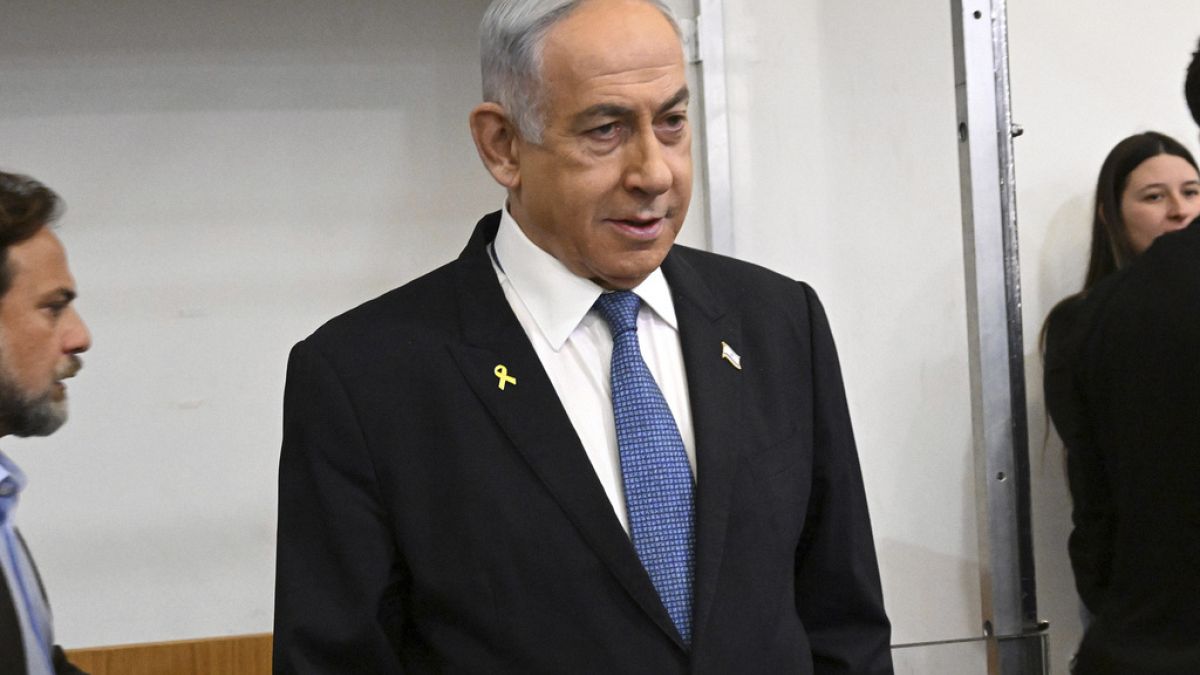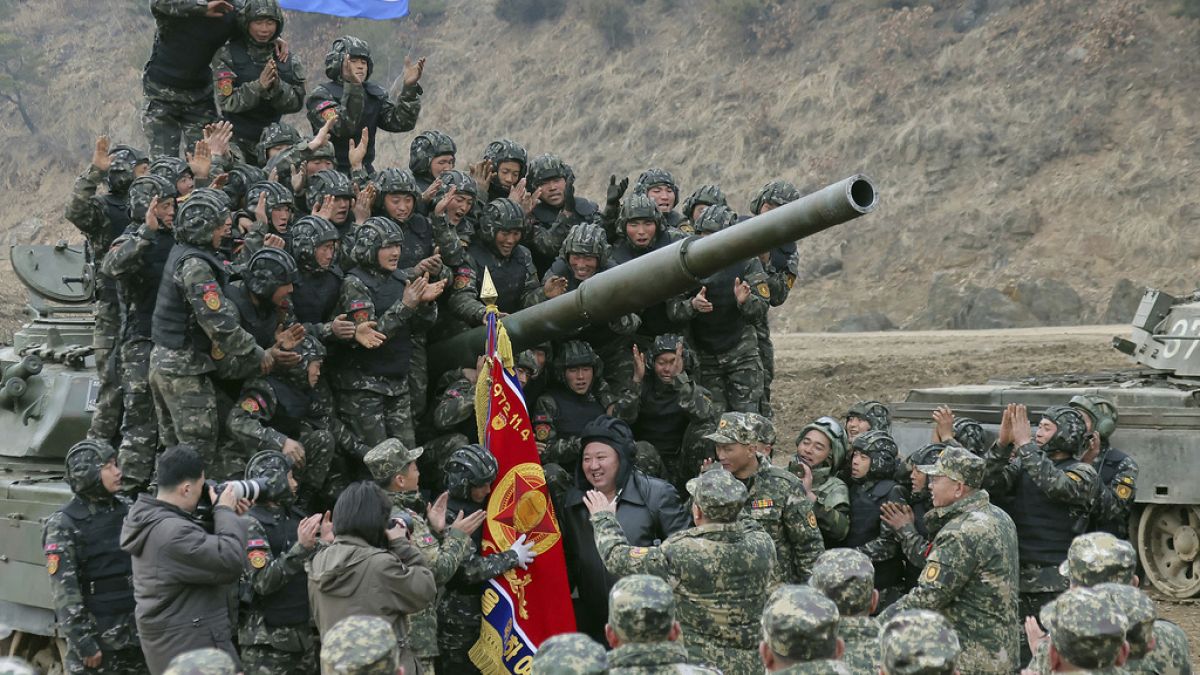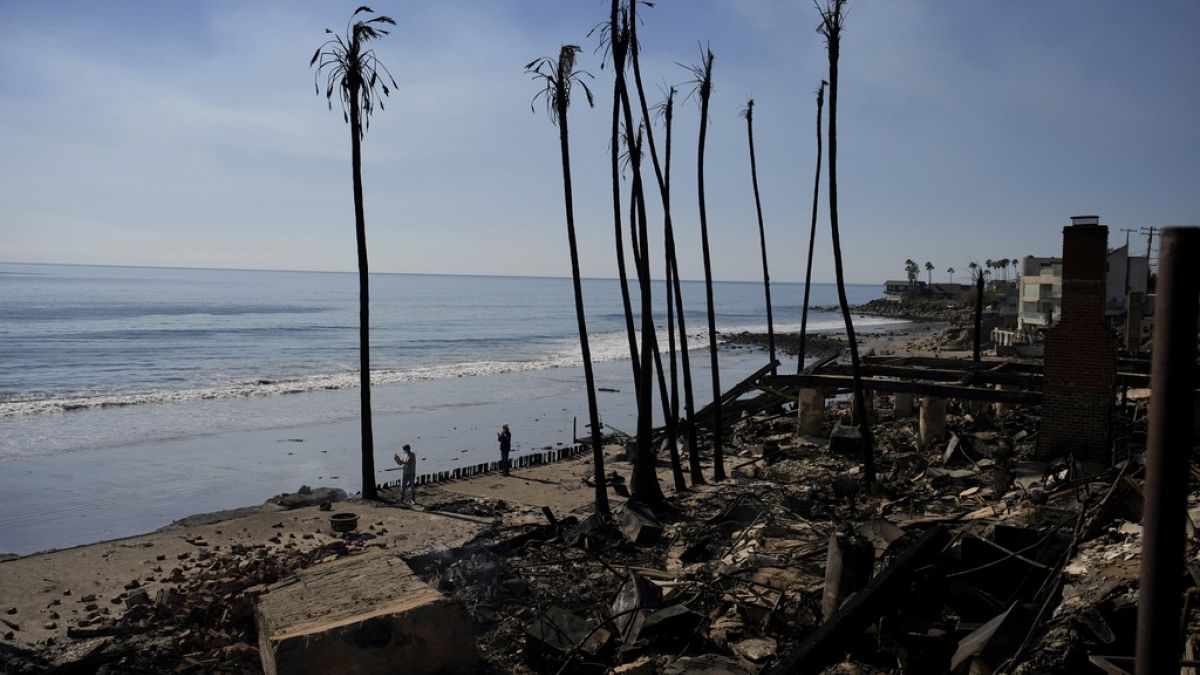Escalation has continued throughout the region in the past year, reaching critical points in several spots. Is there more turmoil to come?
The year 2024 marked a significant escalation in armed conflicts across the Middle East. Alongside relentless bombardments of Gaza, Israel expanded its military operations into Lebanon, targeting Hamas’ ally, Hezbollah, whose forces launched hundreds of rockets into Israeli territory. For the first time in two decades, Israel also engaged in direct confrontation with Iran.
Following Hamas’ attacks on October 7, 2023, Israel launched a ground and air offensive on Gaza, which continues to this day. The Strip remains under blockade, resulting in a dire humanitarian crisis. According to Gaza’s Ministry of Health, more than 45,000 people have lost their lives since the fighting began. Bombardments and a total blockade have turned life for Gaza’s 2.1 million residents into a living nightmare, depriving them of shelter and any means of leaving the region.
In May, Israel conducted a major operation in Rafah, in southern Gaza, seizing control of the Philadelphi Corridor – a 14km buffer zone along the border with Egypt. Hundreds of thousands of residents were forced to flee their homes, seeking refuge in schools, hospitals, and refugee camps, many of which were also targeted by Israeli airstrikes. Hunger and outbreaks of diseases, such as polio, have begun to spread due to acute shortages of food, water, and medical supplies.
The situation in Lebanon also sharply deteriorated. In late September, Israel launched a large-scale offensive against Iran-backed Hezbollah. Over eight weeks, Israeli airstrikes and drones targeted militant positions in southern Lebanon, the Bekaa Valley, and even the capital, Beirut. On September 27, Hezbollah leader Hassan Nasrallah was killed in an Israeli airstrike. His death was followed by intensified clashes, with large-scale bombardments affecting more than 20% of Lebanon’s population – around 1.2 million people were displaced from their homes.
The clashes between Israel and Iran also reached a new level in 2024. Israel conducted two major strikes on Iranian military installations. In April, a commander of the Quds Force was killed, and in October, Israeli airstrikes targeted approximately 20 sites in Iran, including air-defense systems and facilities tied to its nuclear program. Iran retaliated with missile strikes, many of which were intercepted by Israeli air defenses with support from the US, the UK, and Jordan. However, some missiles hit their targets, marking one of the most serious escalations in recent years.
Meanwhile, the domestic situation in Israel around Prime Minister Benjamin Netanyahu remains tense. The International Criminal Court (ICC) has issued an arrest warrant for Netanyahu on charges of war crimes and crimes against humanity in Gaza. Despite this, his popularity within Israel has soared due to military successes in Lebanon and Iran. Internationally, Netanyahu has received substantial backing following Donald Trump’s re-election as US president. With Washington’s unconditional support, the Israeli leader is bolstered in pursuing his plans to expand settlements in the West Bank and intensify confrontations with Iran and its allies.
The humanitarian situation in Gaza has reached catastrophic levels. Food and medical supplies are nearly exhausted, and water distribution has been reduced to a minimum. Addressing the consequences of hunger and disease outbreaks has become increasingly difficult amid ongoing hostilities. International humanitarian organizations, including UNRWA and the Red Cross, have no access to most areas due to the high risk of attacks.
The conflict along the Lebanese-Israeli border has caused significant damage to the region’s infrastructure. Bombardments have disrupted power and water supplies, further deteriorating living conditions for civilians. Lebanese authorities are calling for international intervention, but the influence of external actors such as the US and France remains limited.
Israel’s attacks on Iranian military installations have heightened the risk of nuclear conflict. Analysts warn that Tehran may accelerate its nuclear program as a deterrent measure. Meanwhile, Israel continues to threaten further strikes, escalating regional tensions. Qatar, Egypt, and Türkiye have taken active roles in mediating negotiations to prevent further escalation, but the positions of major global powers such as the US, Russia, and China remain contradictory. Their involvement is largely limited to political statements and providing military support to their respective allies and partners.
The year 2024 marked a turning point for Syria. The seemingly unshakable Assad regime, which had ruled for nearly half a century, suffered a decisive collapse. In early December, armed groups led by Abu Mohammed al-Golani and backed by Türkiye captured Damascus, ending the Assad dynasty’s rule.
The regime’s downfall began with a lightning offensive by Hayat Tahrir al-Sham (HTS), which seized key Syrian cities, including Aleppo, Hama, and Homs, in just ten days. This success was made possible by the weakening of support from President Bashar Assad’s key backers – Hezbollah, Russia, and Iran – who were mired in their own crises throughout 2024. A lack of coordinated defense efforts and the fragmentation of the Syrian army played pivotal roles in the regime’s defeat.
After the fall of Damascus, Bashar Assad fled to Moscow with his family, leaving the country in chaos. This marked the end of a civil war that had begun in 2011, claiming at least 300,000 lives and leaving another 100,000 missing, according to UN estimates.
The new de facto leader of Syria is Abu Mohammed al-Golani, also known as Ahmad al-Sharaa. A former leader of Al-Qaeda’s Syrian branch, he broke ties with the organization in 2016 to lead HTS, which has since come to dominate the northwestern province of Idlib. Al-Golani has pledged to respect the rights of various religious groups, including minorities.
Despite HTS being listed as a terrorist organization by the US, 2024 saw the international community initiate dialogue with its representatives. In December, UN, US, and European diplomats met HTS delegates in Damascus to discuss a peaceful transition of power and the organization of free elections within three months. The US even withdrew its $10 million bounty on al-Golani, signaling a shift in approach toward Syria’s evolving realities.
The fall of Assad’s regime marks a significant event for the Middle East, where geopolitical dynamics have been shifting for years. Syria now stands at the threshold of a new chapter in its history. However, despite the end of the civil war, uncertainty looms, and international attention will be crucial to ensuring stability and security in the region.
The continuation of conflicts in 2024 has laid the groundwork for long-term destabilization across the Middle East. Refugee crises, destroyed infrastructure, and the rise of radical sentiments are creating fertile ground for new crises that could take decades to resolve.
While the complexity of the situation cannot be understated, many international experts stress the urgent need to revive peace negotiations. Only a diplomatic approach can minimize human suffering and pave the way for stability. However, the prospects for such negotiations remain uncertain. Without them, further escalation in the region appears inevitable.
What to expect in 2025?
In 2025, the Middle East will remain a region of high instability and conflict, shaped by the events of previous years. The Israeli-Palestinian conflict will continue to play a central role in the region’s destabilization. Following the devastating events of 2024, including the ongoing humanitarian catastrophe in Gaza, the situation remains critical. Israel is expected to persist in expanding settlements and ignoring the decisions of international institutions such as the UN, the International Criminal Court (ICC), and the International Court of Justice (ICJ). However, growing public outrage in Western countries and increased protests against Israeli actions may shift global opinion, though it is unlikely to affect the steadfast US support for Israel.
The returning administration of Donald Trump will maintain a staunchly pro-Israel stance despite significant political and economic costs for the US. This unwavering support will become a political and economic burden for Washington, undermining trust in the international system established after World War II. Nevertheless, Palestinian resistance, despite its losses, will persist through both diplomatic efforts and force, making normalization of relations between Israel and Arab states impossible.
On the Syrian front, the country’s new leadership will face massive challenges. Rebuilding destroyed administrative institutions and infrastructure will be the primary focus. However, regaining control over the entirety of the country will prove immensely difficult, particularly with external players supporting forces such as the Kurdish YPG/PKK in northeastern Syria. The new Syrian government will likely attempt to negotiate the disarmament and integration of these forces into the nation-building process. Should these negotiations fail, the government may resort to force, potentially igniting new waves of violence.
Regional and global players’ continued interference in Syrian affairs will exacerbate the situation. Moreover, whether Ahmed al-Sharaa can unify the country remains an open question, especially amid reports of emerging factions dissatisfied with the new Syrian government. There is a real risk that Syria could once again be engulfed in the flames of civil war.
Following the fall of Bashar Assad’s regime, Israel, with the backing of the Trump administration, is expected to shift its focus to Iran. Increasing pressure on Tehran will become a central pillar of Israel’s foreign policy, supported by the US and its regional allies. This strategy will likely include military strikes, sabotage operations, and economic strangulation aimed at destabilizing Iran’s internal situation.
Western efforts to establish meaningful negotiations with Iran are unlikely to yield significant results. Confronted with growing isolation, Iran may adopt an even more hardline stance on its nuclear program. Under increasing external pressure and internal crises, Iranian leadership could announce the development of nuclear weapons. Such a move would represent a desperate attempt to safeguard the regime and maintain power, especially amidst threats of foreign intervention and internal instability. From Tehran’s perspective, nuclear weapons could serve as a guarantee of independence and a deterrent against direct military attacks.
However, this decision would likely exacerbate the situation. Announcing the possession of nuclear weapons would provoke a sharp reaction from Israel and the West, potentially leading to intensified strikes on Iran’s critical nuclear facilities and other infrastructure. This would likely be accompanied by additional waves of sanctions, further deteriorating the country’s already fragile economy.
At the same time, internal tensions are expected to deepen. The situation is further complicated by growing ethnic divisions, including clashes between Kurdish and Azerbaijani communities, which were already reported in 2024. Israel and its allies, exploiting the weakened central authority, may seek to inflame these ethnic conflicts, leading to greater regional destabilization within Iran. These developments increase the risk of fragmentation and disunity within the country.
An additional factor of vulnerability lies in the growing relevance of the potential transition of power from Ayatollah Ali Khamenei to his son, Mojtaba. Although there have been no official announcements, rumors of succession plans are shaking stability within Iran’s political elites. Such a power transition could trigger factional struggles for influence, further weakening the central government.
In these conditions, Israel, backed by the US, is expected to continue its operations against Iran, including strikes on critical infrastructure and cyberattacks aimed at undermining stability. Intensified economic sanctions, external provocations, and Iran’s internal challenges make 2025 a perilous year for the nation.
In 2025, the Middle East will continue to experience rising conflict potential, encompassing both existing and emerging zones of confrontation.
Libya will remain one of the key hotspots of instability. The country is still divided between competing centers of power: the internationally recognized Government of National Unity in Tripoli and the Libyan National Army led by Khalifa Haftar, which controls the eastern territories. The primary struggle will revolve around control of natural resources, particularly oil, which will serve as a significant source of tension. The involvement of external players, such as Türkiye and Egypt, will deepen the divide and heighten the risk of renewed escalation.
The ongoing conflict in Sudan, which began in 2023 between the Sudanese Armed Forces (SAF) and the Rapid Support Forces (RSF), is expected to intensify. Clashes are escalating into a larger crisis, particularly in the Darfur and Blue Nile regions, leading to an increase in the number of refugees and a growing humanitarian catastrophe. Sudan’s instability will pose threats to neighboring countries, including Egypt, Chad, and South Sudan, undermining the security of the entire region. Efforts by the international community to stabilize the situation remain ineffective, paving the way for further conflict expansion.
Yemen will remain a central point of regional tension. Israel, Western powers, and their allies, such as Saudi Arabia and the UAE, are likely to increase pressure and military operations against the Ansar Allah movement (the Houthis). Violence in Yemen will remain at a high level, threatening the stability of the Arabian Peninsula. The conflict between the Houthis and the coalition will be fueled by the interests of external players, further complicating prospects for a peaceful resolution.
Lebanon, facing a deep economic and political crisis, risks becoming another flashpoint for escalation. Amid Hezbollah’s weakening position, fierce battles for spheres of influence have already begun, involving both domestic actors and regional powers. Economic collapse, high poverty rates, and humanitarian challenges will exacerbate public discontent. These factors, combined with inter-sectarian tensions, create a serious risk of a new civil war, which could destabilize Lebanon further and intensify crises in neighboring countries.
Economic and social challenges in the Middle East in 2025
In 2025, the economic situation and the social well-being of citizens in the Middle East are expected to deteriorate further under the pressure of global tensions and regional conflicts. These factors will act as additional drivers of instability, exacerbating crises both within individual countries and across the region as a whole.
Egypt’s economic situation is particularly alarming. The decline in revenues from the Suez Canal, driven by reduced global trade volumes and shifts in logistical routes, continues to strain the country’s economy. At the same time, the persistent rise in food prices is deepening social unrest. The worsening living conditions for the majority of the population threaten to undermine the government’s stability and could spark a new wave of anti-government protests. Should these protests escalate, instability in Egypt – the largest Arab nation – could spill over to neighboring countries, amplifying regional crises.
Against the backdrop of the broader crisis, economic competition between Saudi Arabia and the United Arab Emirates (UAE) is intensifying. Both nations are actively vying for international investments and the execution of large-scale infrastructure and energy projects. Saudi Arabia, promoting its Vision 2030 initiatives, including the futuristic city of NEOM, is encountering growing competition from the UAE, which positions itself as the region’s primary financial and transportation hub. This rivalry poses risks of economic tension and could escalate political competition between these two nations, traditionally seen as allies.
Türkiye’s economic situation remains dire. Persistent high inflation continues to erode the purchasing power of its citizens, fueling growing dissatisfaction with the government. Despite efforts by the authorities to stabilize the economy, the standard of living for most of the population is steadily declining. This has intensified anti-government sentiment, which could evolve into mass protests. Faced with existing political and socio-economic challenges, Türkiye risks further polarization of society and a weakening of its leadership’s grip on power.
Economic difficulties in key countries like Egypt, Saudi Arabia, the UAE, and Türkiye have the potential to create a domino effect across the region. Social unrest, economic competition, and political instability will compound existing conflicts in Libya, Sudan, Yemen, and Lebanon, deepening the overall crisis. As pressures intensify, the international community may face new humanitarian challenges, waves of migration, and the expansion of instability zones.
In 2025, economic and social factors will become just as critical as military conflicts in shaping the overall landscape of instability in the Middle East. The deterioration of economic conditions, growing social discontent, and increasing competition among regional powers pose significant risks to the stability of the entire region. Without meaningful interventions or cooperative efforts, these challenges are likely to escalate, making the path to recovery and peace even more uncertain.

 3 hours ago
2
3 hours ago
2












 We deliver critical software at unparalleled value and speed to help your business thrive
We deliver critical software at unparalleled value and speed to help your business thrive






 English (US) ·
English (US) ·